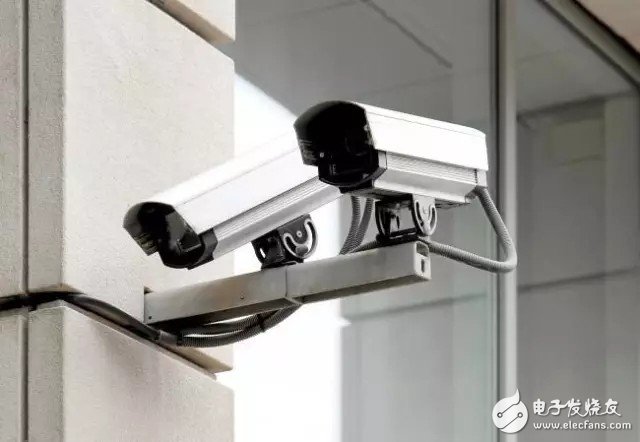The development of smart cities is obvious to all. As an ecosystem, perception is an important part. Perceived Internet of Things based on video surveillance is an important part of data collection, and storage and analysis of data has become a top priority. So in the world of the Internet of Things, what are the challenges of video surveillance coding analysis and storage?
Storage technology field1. Driverless and artificial intelligence: storage will grow linearly and move toward intelligence
By 2020, hundreds of millions of cars on the road will have unmanned functions [1], which is a trend towards the Internet of Things and an advancement in the field of artificial intelligence (AI). To design an unmanned vehicle, you must be able to harness the data of a large number of cameras and sensors, analyze the data and use artificial intelligence.
The more data, the smarter it is! In the past, one of the biggest obstacles to artificial intelligence was processing power, but now, storage is increasingly becoming a limiting factor. Traditional dedicated storage solutions can't keep up with performance requirements or retain data for long periods of time at an affordable price and use the features you need. As a result, more companies are turning to dedicated storage and data solutions that address these challenges.
2, corporate video: a video worth a thousand words
Video will play a bigger role in the activities and processes of more and more organizations, such as strengthening teaching and preventing medical malpractice claims in hospitals, strengthening quality control in manufacturing plants, or analyzing buyer behavior in retail stores. . Companies can also make video play a bigger role in their training and service plans, similar to the trend of video instead of textual descriptions in consumer products.
In fact, although the text is far from obsolete, video is increasingly becoming the actual platform for dissemination in many areas. All of this requires better collaboration between IT and line-of-business leaders to ensure they have the necessary storage and data management infrastructure to support a video-driven world as efficiently and cost-effectively as possible.
3, still shiny object storage
Based on high scalability and high durability, object storage allows users to access massive amounts of data at a lower price than the primary disk storage, while avoiding increased RAID rebuild times associated with high-capacity disks. Object storage has played a fundamental role in public cloud services for some time, but the prediction that it will become the dominant technology for large-scale data retention has not been confirmed.

In many cases, users realize that intelligent file systems and the latest tape storage technologies can deliver comparable or even better performance at a lower cost. As a result, the enterprise will primarily deploy object storage as the basis for its private cloud, and tape will remain its role as a long-term, low-cost archiving best technology for large-scale unstructured data.
4, tape: a far from ending story
There is no doubt that the role of tape in backups will continue to decline, but tape as a storage medium is far from dying. The increasing volume and value of unstructured data has led to a greater focus on the importance of preserving and protecting this data in a robust, low-cost archive. As mentioned earlier, tape is still the best technology for retaining data for long periods of time, with significant improvements in performance, functionality and ecosystem every few years.
That's why organizations that respond to massive amounts of unstructured data, including genomics, academic research, video surveillance, and entertainment, continue to use tape as a key component of their storage infrastructure. That's why companies that vow to stay away from tape are going back. At the same time, as large private cloud providers expand their role as primary storage vendors and drive down prices in the competition, they will rely more on tape to get business models up and running.
Although hidden behind the cloud, tape has long been used in this area because its economic benefits cannot be defeated.
5, to avoid cloud islands
Industry analyst firm IDC predicts that from 2015 to 2020, the annual compound growth rates of IT infrastructure spending in public and private cloud environments will be 19% and 10%, respectively. As more data migrates to the public cloud, we predict that more users will adopt the dual cloud vendor strategy. Companies must retain at least two sources for critical infrastructure components to avoid vendor lock-in and loss of flexibility.
Similarly, companies are realizing that they must extend this approach to buying cloud services. However, a key challenge is to connect public and private clouds so that they can seamlessly configure cloud resources and migrate workloads in the cloud. No one wants to go back to the world of storage silos and face management problems caused by storage silos. Enterprises will increasingly seek multi-site, and cloud-based storage and data management solutions. In addition, companies will begin to use the cloud as a data management tool that can host their multi-site environments.
6, the new year's video resolution
4K video is not new. The cinema has been showing 4K content since 2011, and Netflix started broadcasting some shows with 4K video 2 years ago. However, although many vendors in the media and entertainment industry have migrated to 4K and even started to achieve higher resolution video, 4K adoption in other markets is relatively slow. One of the main reasons is that companies are still trying to find ways to manage such data.
The challenge of 4K video is not only the much larger file, but also the much higher data rate: the ability to capture and deliver 4K data in a smooth, predictable live broadcast without losing frames or causing other distortion distortions. It often goes beyond the capabilities of existing storage infrastructure. As video plays a bigger role in the enterprise, organizations will increasingly need to bridge this gap.
The key to achieving this goal without replacing the entire storage infrastructure is to take advantage of high-performance solutions optimized for video that can be integrated into existing infrastructure.
6, high performance computing (HPC): adapt to new needs
As emerging cluster computing becomes more commonplace in every enterprise, organizations are rapidly creating more data, and they want to make strategic use of this data to make better and faster business decisions—for example, about new investments , more efficient operations, higher product quality or improved customer service. As a result, more and more companies are looking for best practices and technologies in the high-performance computing industry to deliver the performance, capacity, and data management capabilities required for this new scale.
High-performance computing providers can help organizations integrate open source initiatives, determine how best to leverage low-cost hardware platforms, and simplify data management in a single namespace with simple tiering. Most importantly, however, the high-performance computing industry is no longer focused solely on traditional binary data, and has led to a tremendous increase in richer unstructured data.
Video surveillance field1, more video data to support video analysis
Companies must be better at using unstructured data to identify patterns and trends. Monitoring data, or more accurately "video data," will increasingly be used for commercial purposes. Not only is it used to protect people and property, video surveillance will also generate greater economic returns. Highly sophisticated video analytics applications will become more popular, helping decision makers make more informed business decisions. Now, 50% of the analysis is not just for safety. In order to support these analysis functions, the video must be kept for a longer period of time.
2, embedded intelligent surveillance camera
The number of cameras in 2016, especially the number of high-definition cameras that generate more data to manage, has soared. We expect that cameras with wider panoramas, higher resolutions and more sensors will accelerate in 2017. More projects moving from analog to SD cameras require more monitoring capabilities, such as compression, streaming, storage, and analysis, to be bundled into the camera for greater value.
The influx of data will put pressure on storage and make smart, multi-tiered storage strategies more important than ever. As the intelligence in the camera continues to increase, it becomes more important to effectively manage the massive influx of storage management software.

3, medical care video surveillance
The challenges faced by medical institutions: medical site violence, drug-related crimes, infant and child abduction threats, natural disasters, terrorism, etc., require medical institutions to carry out major monitoring upgrades or comprehensive system transformation. 80% of hospitals need to upgrade access control systems and closed circuit television monitoring systems (IAHSS). For example, to prevent litigation caused by slipping, it is recommended that the medical structure retain at least two years of video data.
In addition, the number of controllable observation rooms can quickly exceed the number of security cameras, and the ability of caregivers to monitor patients and improve overall care quality needs to be expanded. Addressing these changes and challenges requires a modern video surveillance solution to improve overall facility security while increasing operational efficiency.
4. The rise of biometrics
Face recognition is now used to identify suspects. Medical institutions will also increasingly add facial recognition to their safety facilities. We anticipate that the number of computing applications will be more widely adopted to help transportation agencies reduce congestion and improve service. More and more biometrics are helping to prevent data breaches that have become commonplace.
Public and private institutions will adopt more sophisticated cybersecurity. Facial recognition is another area of ​​growth where biometrics are now used in wearable cameras. Both technologies have great potential and require intelligent multi-tiered storage to control the cost of the data required.
5, IoT sensor and video management
The rise of the Internet of Things is the "culprit" of data growth. The real challenge for IT managers will be to integrate this data with large, diverse file types such as video surveillance to enable integrated business intelligence. This will challenge the data management of the IT department, which is responsible for creating the infrastructure to house, protect and analyze large video data sets, as well as millions of IoT sensor files.
In addition, the list of video data and data from the "smart" devices, storage needs, and the growing benefits of storage integration will break out. Embedded sensor technology will make cities smarter, and data from sensors will be integrated with video data and analyzed to help the urban community become more attractive.
More aggressively collect vehicle and pedestrian traffic data and integrate sensor data with trains, buses and subways to reduce traffic congestion. Parking can be monitored, and video plus data from smart meters will reduce bottlenecks and increase consumer satisfaction.
6, the rise of video surveillance as a service
As we see smarter cameras and more types of sensors integrated into the camera, we gradually turn to in-band analysis. The convergence of these factors laid the foundation for video surveillance as a service. Smaller deployments will be aggregated into this service model. Business parks can centrally handle monitoring services. They use smart cameras with in-band analytics and other sensors to automate the processing of functions that require multiple workers and enable more proactive monitoring to bridge prosecution patterns and prevention systems. The gap between.
In 2017, regardless of the video surveillance field or the storage field, its development is objective. Are you ready for the strong enterprises and equipment manufacturers?
Medical Training Media Processor
Medical Training Media Processor,Medical Video Recorder,Video Conferencing Encoders,Medical Signal Recording Encoders
SZ REACH TECH,.CO LTD , https://www.szreachtech.com